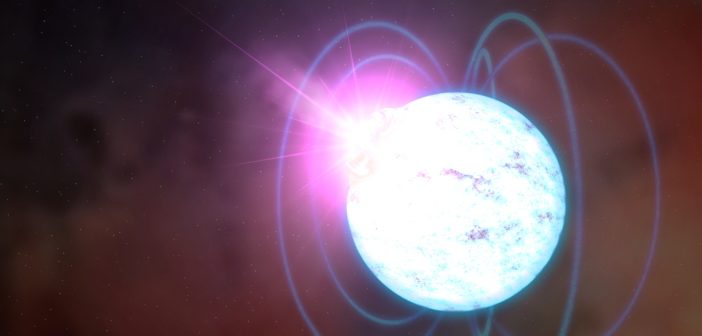Editor’s note: In these last two weeks of 2018, we’ll be looking at a few selections that we haven’t yet discussed on AAS Nova from among the most-downloaded papers published in AAS journals this year. The usual posting schedule will resume in January.
Revival of the Magnetar PSR J1622–4950: Observations with MeerKAT, Parkes, XMM-Newton, Swift, Chandra, and NuSTAR
Published April 2018
Main takeaway:
A ultra-magnetized neutron star that has been quiescent for three years has now reawakened, according to a study led by Fernando Camilo (SKA South Africa). New radio and X-ray observations of the magnetar PSR J1622–4950 reveal pulses of radiation from this source for the first time since 2014.
Why it’s interesting:
Unlike pulsars, which are neutron stars with emission powered by the decay of their rotation, magnetars are neutron stars powered by the decay of their extremely strong magnetic fields. Of the nearly two dozen confirmed magnetars, only four have been discovered to exhibit radio pulses in addition to X-rays — and J1622–4950 is one of them. Exploring this source is therefore important for understanding the physics at work, as well as the similarities and differences between magnetars and pulsars.
The additional intrigue of a new telescope:
The radio observations of J1622–4950 were made in large part by the brand new MeerKAT radio telescope in South Africa, an array of 64 dishes that is now the largest and most sensitive radio telescope in the southern hemisphere. The MeerKAT observations of J1622–4950 were made in April through October 2017, while the telescope was still in the process of being built — only 16 of the 64 dishes were used. Camilo and collaborators’ study mark the first scientific publication based on MeerKAT data … and we can hope for many more in the future!Citation
F. Camilo et al 2018 ApJ 856 180. doi:10.3847/1538-4357/aab35a


1 Comment
Pingback: Selections from 2018: Revival of a Magnetar – New